Why T-34 lost to PzKpfw III, but won against Tigers and Panthers. The revival of tank corps
The most important features
Briefly summarizing what was written earlier, we note that the tank brigade was the most familiar for the Soviet tank crews an independent connection of the Red Army armored troops, as they existed in them from the beginning of the 30s (though they were called mechanized brigades) until the very beginning of the Great Patriotic War, when the vast majority of brigades were disbanded to saturate the mechanized corps. The latter appeared in the Red Army at the very beginning of the 30s, but were later disbanded, due to the cumbersome and difficult management. It was assumed that they will be replaced by motorized divisions arr. 1939, and it was an extremely successful decision, as the staff of these units approached the Wehrmacht’s tank division of the 1941 model to the maximum extent. And she, this division, was perhaps the most advanced tool of maneuver warfare at that time.
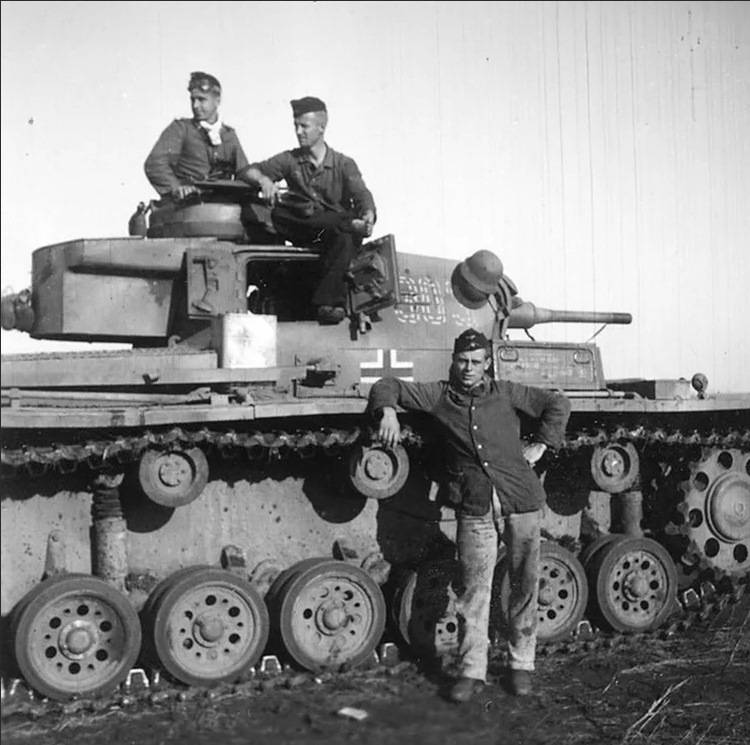
Unfortunately, such a successful undertaking was not developed. Apparently, under the influence of the successes of the tank forces of the Wehrmacht, the country in 1940 began the formation of tank divisions and mechanized corps, the bulk of which, alas, was lost in the first battles of the Great Patriotic War. Alas, the mechanized corps and tank divisions did not demonstrate high efficiency, and the USSR, which had lost considerable territory and was forced to evacuate the masses of industrial enterprises to the rear, could not immediately begin to revive them. In addition, the belligerent army experienced a great need for tanks to support rifle divisions, and all this together led to the fact that in August 1941, it was decided to abandon the formation of tank divisions and mechanized corps in favor of tank brigades.
For all its inevitability, such a return was not the optimal solution, because the tank was never self-sufficient on the battlefield - in order to make its use effective, support for infantry and artillery was necessary. But the tank brigade had almost none of the others, and interaction with rifle divisions and corps was rarely satisfactory for many reasons. Therefore, the leadership of the Red Army launched the formation of formations, larger than a tank brigade, and included not only purely tank units, but also motorized infantry and artillery — and as soon as at least minimal conditions arose.
New tank corps
As mentioned above, 1941 refused to form tank formations larger than the brigade in August. But already March 31 issued the directive of the USSR People’s Commissariat of Defense No. 1942ss, according to which four new tank corps should be formed in April of the same year. But with the pre-war mechanized corps (MK), despite the similarity in the names, the new tank corps (TK) had practically nothing in common.
If the MK of the 1940 sample was equipped with 2 tank and one motorized divisions, the new TC had the same number of brigades. In addition, the MK consisted of many parts of the reinforcement - a motorcycle regiment, several separate battalions, and even an air squadron, and in the TK there was nothing of the kind, only the management of the corps as part of the 99 man was provided.
Thus, the new TC was a much more compact connection. His two tank brigades, staffed by staff No. 010 / 345-010 / 352, had 46 tanks and 1 107 people. personnel, and the motorized rifle brigade on staff No. 010 / 370-010 / 380 did not have tanks at all, but it had at its disposal 7 armored vehicles, 345 vehicles, 10 people. In total, the tank corps was originally designed to include 3 tanks (152 KV, 100 T-20 and 40 T-34), 40 cannon with 60 mm, 20 76,2-mm mortar, 4 120-mm mortar, and out of the rest of the number of the number of out on the list. 42 82-mm cannons and 12 PTR, as well as 45 66-mm anti-aircraft guns. In addition, the TC was equipped with 20 cars. The number of personnel was 37 539 person.
Interestingly, these numbers do not fully coincide with the states of tank and motorized rifle brigades. So, for example, only in a motorized rifle brigade, 20 76,2-mm guns were laid for the specified state, but in addition to this, for 4, guns of the same caliber were to be in tank brigades. That is, all of them should have been 28, but it is indicated that there were only 20 in their TK. On the contrary, the sum of the number of personnel of the three brigades and 99 hull management people gives 5 465 people, which on 138 people. below the number of tank corps. One can only assume that in the corps brigades there were some insignificant differences from individual brigades of the same state.
In general, the new tank corps looked like rather strange formations, most of all resembling a “thinner” approximately twice mechanized division of the pre-war model. Their undoubted advantages were the presence in the compound of some field artillery and a fair amount of motorized infantry - in fact, apart from the motorized rifle brigade itself, and the tank brigades had one motorized rifle battalion, alas, stung to 400 people. At the same time, the new tank corps, by virtue of its small number, was, at least in theory, an easier-to-control unit than a tank or motorized division. But this, alas, its advantages ended. The major drawbacks were the insufficient number of control and the lack of supporting compounds, such as coherent, reconnaissance and rear, and in addition, the lack of their own fire weapons. While the German tank division of the sample had its own light and heavy howitzers of 105-mm and 150-mm caliber, respectively, the Soviet tank corps had to be content with only 76,2-mm artillery. Even with the main striking force - tanks everything was not in perfect order. Theoretically, of course, having in its composition heavy, light and medium tanks, the corps could form the optimal outfit of forces for solving any task, but in practice the presence of three types of tanks only complicated their joint use and operation.
First steps to excellence
Obviously, the state of the tank corps according to the directive of 31 in March 1942 was considered non-optimal even at the time of its signing. Therefore, already during the formation of the first TK, there were quite significant changes in its organizational structure - a third tank brigade of the same size was added, which brought the number of tanks in the hull to 150 units, and also the engineering mine company in 106 people. numbers.
Some shortcomings could be eradicated by changing the organizational structure of the corps. So, for example, as mentioned earlier, the individual tank brigades that had been formed since August 1941 had a mixed composition and included themselves 3 type tanks.
Most likely this decision was not so much the result of some tactical views, as the result of a banal lack of tanks in order to form homogeneous brigades. As is known, KV, T-34 and T-60, as well as T-70 used in some cases instead of them, were produced by various factories, and probably in the Red Army simply brought these tank "streams" together, avoiding delay in the formation of new connections. . In addition, KV was produced relatively little, so that the heavy brigades would be created more slowly than usual, and the compounds that were armed only with light tanks would be too weak.
And yet this was a deliberately non-optimal solution. Of course, in 1941-1942. for a separate tank brigade, the presence of a small number of KVs could provide certain tactical advantages. What, in fact, subsequently gave the Germans separate companies of heavy Tiger tanks, which, as part of separate operations, were separated from the heavy tank battalion and attached to other units. But this concerned a tank brigade, which could act separately, supporting, for example, the rifle corps, and not interacting with other tank units, and this had to be paid for with difficulties in maintenance and a lower mobility of the brigade’s tank fleet. But in the tank building, consisting of three brigades, "smearing" of heavy tanks by brigades, in general, did not make sense.
Therefore, in May, a redistribution of tanks in the hull took place, so to speak. If before the TK had three similar tank brigades, each of which had KV and T-34 and T-60, then since May 1942 were reorganized into one heavy, which should have counted 32 KV and 21 T-60, and just - 53 tanks and two medium-sized, each armed with 65 tanks (44 T-34 and 21 T-60). Thus, the total number of tanks in the three brigades reached 183 machines, while the proportion of light tanks decreased from 40 to 34,5%. Alas, such a decision proved unbearable for our industry, so already in June 1942 had to reform the heavy brigade, reducing its total number from 53 to 51 machines, and reducing the number of KV from 32 to 24. In this form, the tank hull consisted of 181 tank, including 24 KV, 88 T-34 and 79 T-60 (or T-70), while the proportion of light tanks even increased slightly, reaching almost 41,4%.
The formation of tank corps was literally explosive in nature. In March, 1942 was formed four TCs (from 1-th to 4-th), in April - another eight (5-7; 10; 21-24), in May - five (9; 11; 12; 14; 15; 16; 18; 27; 2; 8; 13; 23; 1942; 5; 1943; 31; 1943; XNUMX; XNUMX; XNUMX; XNUMX; XNUMX; XNUMX; XNUMX; XNUMX), in June - four (XNUMX-XNUMX and XNUMX), and besides, most likely XNUMX tank corps, XNUMX-th and XNUMX-th, the exact date of which the author is unknown, were created in the same period. Thus, in the period from April to June, the Red Army received an XNUMX tank corps! Subsequently, the rates of their formation were nevertheless reduced, but before the end of XNUMX, XNUMX tank corps were created, in February XNUMX r - two more, and finally, the last, XNUMX-th TC was formed in May XNUMX.
At the same time, oddly enough, but the quantitative growth of the tank corps was accompanied (for once, by all) with qualitative improvements, at least in terms of structure.
Formally, our tank corps, formed in April-June 1942, by the number of tanks could already be considered a kind of analogue of the German tank divisions. Indeed, in April, the regular number of tanks in the TK reached 150, and in May it exceeded 180, while in the German tank division, depending on the state, their number could reach 160-221 units. But at the same time, the German connection was much larger - 16 thousand people, against approximately 5,6-7 thousand people. tank corps with two and three tank brigades, respectively. The German tank division could have up to two regiments of motorized infantry, against one brigade of our mechanized corps, and much stronger artillery, both field and anti-tank and anti-aircraft. The German division had a lot more cars (even in terms of a thousand personnel), besides, in addition to the "combat" regiments, there were numerous support units that the April-June Soviet tank corps were deprived of.
In addition, the massive formation of tank corps, to a certain extent, faced the same problems as the pre-war formation of the 21 additional mechanized corps. There were not enough tanks, therefore, often, Lend-Lease vehicles, including Matilda and Valentine infantry tanks, got into the tank brigades. The latter would have looked very well in some separate battalions of support for rifle divisions, but they were extremely few for the needs of the tank corps, and besides, they introduced additional diversity, making the tank parks of the TK very "motley". In addition, during the formation of new shopping centers, they usually sought to take existing, trained, or even have managed to make war tank brigades, but the motorized rifle brigades were either formed with “0” or were reorganized from any third-party connections, like ski battalions. In this case, combat coordination between teams often simply did not have time to carry out.
But the situation was corrected literally on the move: new divisions were added to the tank corps, such as the reconnaissance battalion, equipment repair bases and others, although, unfortunately, it is impossible to say exactly when exactly what additions occurred. It is likely that such subunits of the TK were staffed as far as possible, but nevertheless, all this, of course, served to increase the combat effectiveness of the Soviet tank corps. As of 28 in January 1943, according to Decree No. GOKO-2791ss, the staff of the tank corps was established as follows:
Office housing - 122 people.
Tank brigade (3 units) - 3 348 people. that is, 1 116 people. in the brigade.
Motorized rifle brigade - 3 215 people.
Mortar regiment - 827 people.
Self-propelled artillery regiment - 304 people.
Guards mortar division ("Katyusha") - 244 people.
Armored Car Battalion - 111 people.
Communications battalion - 257 people.
Saperny battalion - 491 people.
Fuel supply company - 74 people.
PRB Tank - 72 people
PRB wheel - 70 people.
All with a reserve - 9 667 people.
Also, starting from August 1941 g, the struggle with the different types of equipment in tank brigades begins. The fact is that on July 31 of the same year the new staff of the tank brigade No. 010 / 270 - 277 was approved. Perhaps the main difference from previous states was a change in the composition of tank battalions: if before there was a 2 battalion with KV tanks, T-34 and T-60 in each, the new brigade received one battalion of medium tanks (21 T-34) and one mixed battalion in the 10 T-34 and 21 T-60 or T-70. Thus, the first step towards the unification of equipment was made - not only did only medium and light tanks remain in its composition, but also one battalion had a completely homogeneous composition.
It cannot be said that before this, the Red Army had no brigades at all, the battalions of which would consist of machines of the same type, but this was, in general, a forced decision, and such brigades were formed by the equipment of the Stalingrad tank factory when the front line approached the city - there was no time to wait for the supply of light tanks and KV, tank brigades went into battle almost from the factory gates.
Of course, the introduction of the new state did not lead to immediate and ubiquitous changes - it was already mentioned above that the newly formed corps still had to be assembled not with what was necessary for the state, but with what was at hand. But the situation gradually improved, and by the end of 1942, most of the tank brigades were transferred to staff No. 010 / 270 - 277.
The situation with a small number of motorized infantry was straightened to a certain extent by creating mechanized corps, which was launched in the 2-th half of 1942. In essence, such a mechanized corps was an almost exact copy of the tank corps, with the exception of the “mirror” structure of the brigades: instead of three and one motorized brigade had three motorized and one tank. Accordingly, the number of the mechanized corps significantly exceeded that of the “tank analogue” and accounted for, according to Resolution No. GOKO-2791ss from 28 in January 1943, 15 740 people.
And so, at the beginning of 1943 of the year ...
Thus, we see how the Soviet tank corps, revived in April 1942, gradually, by the end of the same year, gradually became a formidable fighting force, which, of course, was not yet equal to the German tank division of model 1941, but ... But you need to understand that the German Panzerwa also did not remain unchanged. And if the power of the Soviet tank corps gradually grew over time, then the combat capability of the German tank division was just as steadily falling.
Yes, in 1942, the Germans determined the number of tanks in the state of their divisions in the amount of 200 units, and this was an increase for those divisions that had previously been supposed to have 160 tanks (a two-batch tank regiment), but it must be understood that combat losses led to the fact that only a few divisions could boast such a number of armored vehicles. And in its normal state, the number of tanks in the Wehrmacht’s tank divisions often no longer exceeded 100 vehicles. “Hudela” and motorized infantry TD - although from June 1942 its regiments in the tank divisions received the sonorous name “Panzer-Grenadiers”, but later the number of companies in their mouths was reduced from 5 to 4.
As you know, the Germans for offensive operations on the environment (and not only) preferred to use tank and motorized divisions together. And if the Soviet tank corps, in essence, was supposed to solve similar problems with those that were solved by the German tank divisions, then the mechanized corps, to a certain degree, was an analogue of the German motorized divisions. At the same time, as we said above, the Soviet TK still “did not reach out” to the German TD. But the Soviet mechanized corps, according to the 28 established by 1943 in January, seems to be even better than the German MD - if only because it has its own tanks in the tank brigade, while the German "mobile" division had them completely devoid.
In general, throughout the 1942 of the city, the Red Army managed to form 28 tank corps. Interestingly, they were not thrown into battle immediately as they were manned, trying to give at least a minimum of time for training and combat coordination. However, for the first time the new tank corps entered into battle in June 1942, during the Voronezh-Voroshilovgrad strategic defensive operation, and all in all it was involved 13 tank corps. And since then in the history of the Red Army it would be very difficult to find a major operation in which tank corps would not take part.
By the end of the year, three tank corps (7, 24 and 26) were converted into Guards tank corps, which received the "reverse" numbering of 3, 2 and 1, respectively. Another 5 tank corps were reorganized into mechanized ones, and the total number of mechanized corps reached six. And only one tank corps was killed in battle, being almost completely destroyed near Kharkov. All this testified to the growth of the fighting qualities of the Soviet tank forces - especially if we remember how many tank divisions we lost in the first months of World War II, alas, causing only minimal damage to the enemy. The German Pancerwaffe still outnumbered our tank forces at the expense of their wealth of experience, and to some extent still due to better organization of troops, but this lag was not as significant as in 1941. In general, perhaps, to say that in the second war year, many of our tank corps learned to conduct successful defensive operations even when they were opposed by the best parts of the Wehrmacht, but offensive operations were still limping, although certain progress was made here.
You can also say that by the beginning of 1943, the Red Army created quite adequate tools of a maneuverable war "in the face" of tank and mechanized corps, which still lacked experience, hardware and which were still inferior to the German tank forces, but the difference in combat capability between them was already many times smaller than the one that existed at the beginning of the war, and indeed it was rapidly declining. And, moreover, the production of T-34 was increased, gradually becoming essentially the main battle tank of the Red Army, its childhood diseases were eradicated, so that the T-34 was becoming more and more dangerous machine, and its resource gradually increased. Quite a bit remained until the time when the X-NUMX of the ugly duckling T-1943 from the “weak-sighted” machine with difficult control, requiring a high qualification of the driver and a small engine resource, finally turned into a “white swan” tank War - a reliable and effective combat vehicle, which is so loved in parts, and which has earned deserved fame on the battlefield, but ...
But the Germans, unfortunately, also did not stand still.
To be continued ...
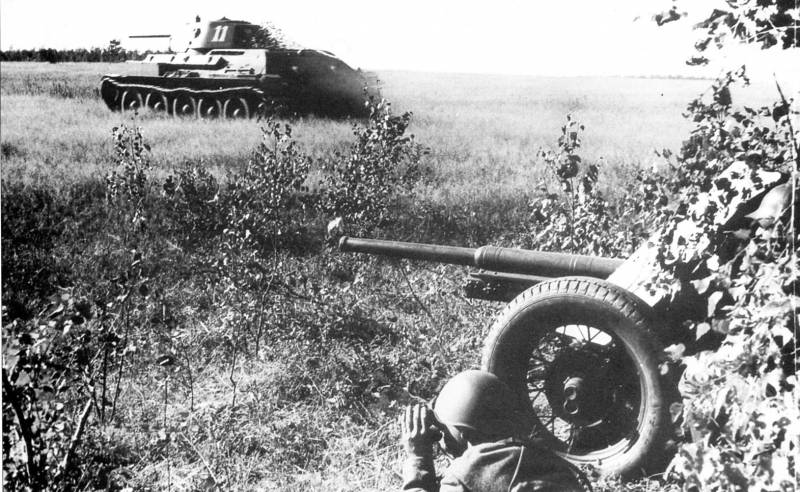
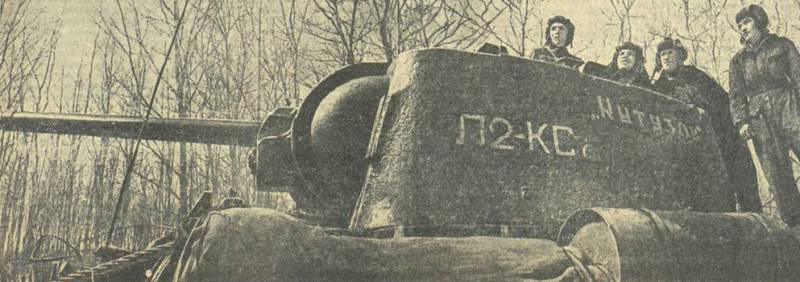
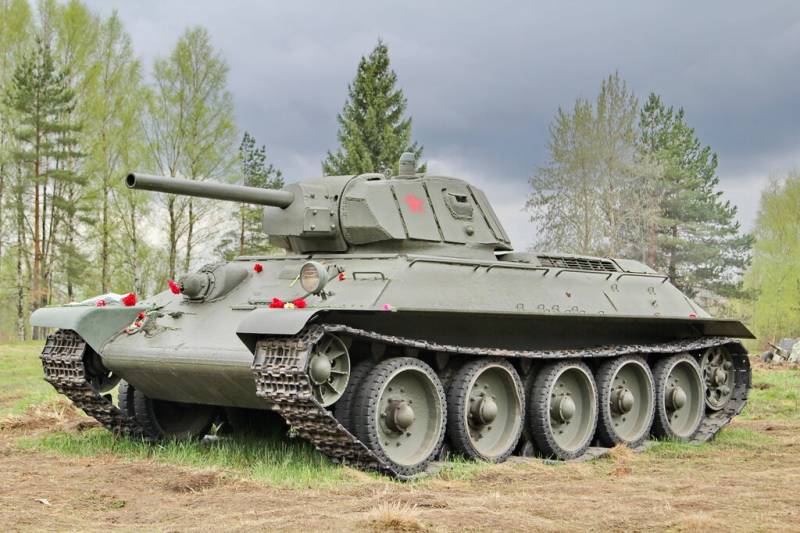
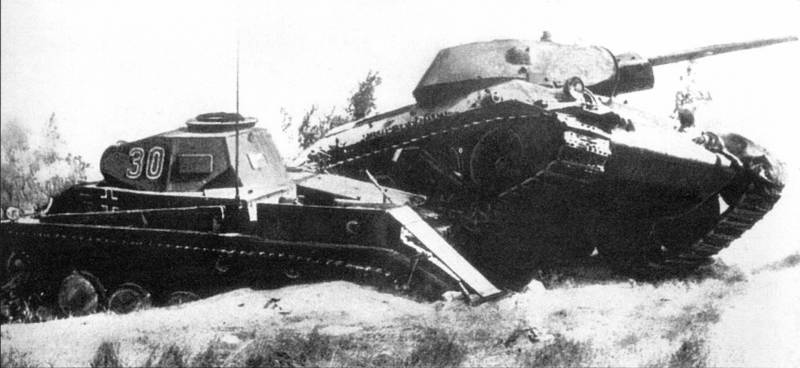
Information